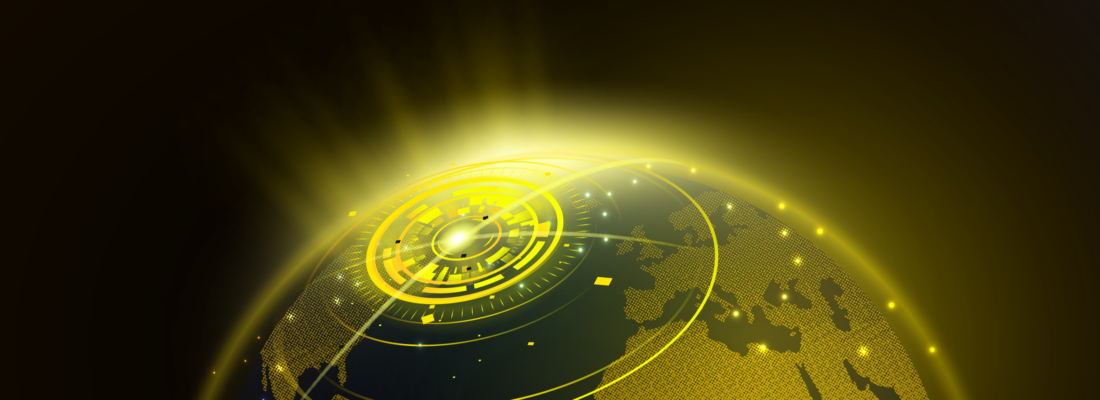AES is a leading renewable-energy company with global operations. The business produces energy and distributes energy for both private, public, and governmental organizations. AES was recently named one of the World’s Most Ethical Companies for the ninth straight year and won the Edison Electric Institute’s (EEI’s) Edison Award– the industry’s most prestigious award for contributing to the advancement of the electric industry. AES successfully transformed their business from fossil fuels to renewables and is accelerating this change with successful digital and AI transformations.
Challenge
We hear about climate change almost every day. Seeing stories of our changing world was a transforming moment in AES’s history, and it set the company on a path to greatly accelerate their move to building and providing renewable energy at scale. The business transformation drove the need for a digital and AI transformation to better predict and optimize the energy output from renewable sources, predict failures, and optimize load distribution. AES started their AI transformation journey two years ago.
“We didn’t have a single data scientist on payroll when we started our AI transformation. We started with a few high value use cases, built a team, and found a platform to accelerate our results,” said Sean Otto, Director and Head of AI at AES.
Solution
Define and Pilot
AES started by creating an AI strategy and then worked closely with their business partners to determine the best starting use cases: (1) wind-turbine predictive maintenance, (2) energy bidding strategy for hydroelectric power plants, (3) and smart meters. Time-to-value and ROI were key success metrics, so they selected the H2O AI Cloud to accelerate their ability to make state-of-the-art AI models and get them into production. The AES team used design thinking principles to ensure his team was directly solving business problems, and they communicated about AI in a way the business leaders could understand. The AES team met with each business stakeholder every week to drive adoption and success.
Wind-Turbine Predictive Maintenance
AES runs numerous wind turbine farms, generating gigawatts of renewable energy. Wind turbines have numerous moving parts that are subjected to harsh environments and significant vibration that compound wear and tear on their parts. Many maintenance projects require specialized and expensive cranes, which can cost upwards of $100k for every repair. If the maintenance can be predicted and planned, the costs are 2/3rds less– around $30k. In addition, sending trucks into the field to go repair equipment only to find that they didn’t bring the right parts was wasteful and time consuming.
“We wanted to send our trucks to the towers that needed repair, with knowledge about specific maintenance needs. We also wanted to make sure they were equipped with the parts required to perform the maintenance. Before our AI solutions, we were working on a “best effort” basis, and trips rarely went exactly to plan,” Otto said.
While cost and time savings were the clearest business measures, the highest value part of the initiative was to reduce the risk of a power shortage for their customers.
“If we don’t produce the power we say we’re going to produce, businesses such as manufacturing lines can’t operate, and citizens face energy brownouts. We need to accurately predict downtime to accurately forecast power generation, and then deliver against our forecasts everytime, without exception.”
Sean, and his newly created data science team, set about a project to predict failure on dozens of wind turbine components. They started with existing data from the wind turbine manufacturers leveraging physics-based models and combined those with the H2O AI Cloud to build about a dozen models that provided greater than 90% accuracy. While data scientists do not use their models in day to day operations, wind performance engineers do. To make the outputs of the models more useful for the performance engineers, scenario analysis (Monte Carlo simulations) are included in the final outputs to provide key intelligence to the business answering the following questions: What do we think is going to fail? How long until it fails (confidence interval)? Should we handle the issue with planned maintenance, or is it better to let it fail and deal with unplanned maintenance?
The initiative immediately delivered cost savings and more consistent power delivery, so the team worked on capturing more data, adding sensors to multiple wind turbine components, and automating oil sampling. The AES team now has 35 models in production to help predict failures across their fleet of wind turbines.
The initiative has delivered millions of dollars of cost savings and improved consistent power delivery for the company.
Future for Predictive Maintenance
AES is expanding its predictive maintenance efforts to include imagery from drones to assess blade damage and work on solar farms to identify poor performing panels and cleaning schedules. The drones will fly over turbines and shoot video and images. H2O.ai’s no code Deep Learning product, H2O Hydrogen Torch, will identify cracks and other signs of external wear on the towers and blades. For solar projects, technicians are often sent out when panels aren’t producing as expected. During the winter, one of the main reasons this can happen is snowfall. Instead of sending out technicians to a site to assess poor performance, which is costly, they can sit back in the Remote Operations Center and wait for the snow to melt. The AI is accurately predicting snow based on weather data for the solar farm area, and the AES team is working on additional models that will further help reduce maintenance costs for the solar farms.
Energy Bidding Strategy for Hydroelectric Power Plants
AES owns and operates numerous global hydroelectric power plants, and based on their bidding strategy they can either make more or less revenue for the same amount of power. Everyday and hour, there is an energy market which is settled by an independent system operator who helps to regulate the market. The ISO receives requests for electricity from utilities, such as Seattle City Light, and it also receives supply amounts from energy producers, such as AES, at certain price levels. If there are enough low-cost bids to meet the supply, then the higher cost bids won’t sell their energy. In hydroelectric power production, rainfall and the resulting amount of water in the reservoir is their fuel, and they can choose to run that through the turbines to generate electricity, or not, based on the price. Using data such as the current amount of water predicted, rainfall, cost of operations, and predicted demand for electricity in the region, AES can generate bids that maximize the revenue they’ll get for their power. AES uses models made and operated with the H2O AI Cloud to help set the daily price and amounts for their power plants. The intelligence is sent to an energy trader who places the bids and ensures the transactions take place. The added accuracy of their AI solutions increased energy revenue and increased AES’s ability to support a reliable carbon-free grid. AES is also using AI in a similar manner for its natural gas power plants.
Smart Meters
AES utility companies leverage more than one-million smart meters (AMI) to monitor energy consumption, and sometimes smart meters will have maintenance issues or be subject to “bad actors” who are trying to cheat on their energy usage. If a technician is sent out to repair a meter, but there is nothing wrong with the meter, it is just a “bad actor”, there is nothing for the technician to do, and time and money are wasted. The team created AI based on data from the smart meters to predict actual maintenance issues vs. bad actors. In addition, if they predicted failure, AES could build the repairs into scheduled maintenance, reducing the number of visits a technician needed to make. With AI, the team was able to eliminate 3,000 non-essential trips (called a “truck roll”), for an annual savings of $1M.
Scale
Within the first year, AES data science team had proven the value AI can deliver, and they set about scaling the team and working through a broader set of use cases. AES now has more than 150 models and 85 AI use cases in production. From the beginning, the AES team works closely with each business unit, so every case is solving key business challenges. Some of their use cases include vegetation management (optimization for tree trimming to reduce power line outages while reducing costs), wake steering for wind turbines to maximize power output, predict renewable energy during “extreme” weather scenarios. The vegetation management solution not only reduced the amount of area that needed to be trimmed, which saved costs, it also helped AES reduce their Customer Average Interruption Duration Index (CAIDI) value by 10%. CAIDI is a measure of the amount of power outage a customer will face on an annual basis, and it is a key measure of operational performance in the energy industry.
AES leverages H2O MLOps to monitor model performance and bias, H2O Wave to build business-facing applications, and the H2O AI AppStore to share applications across the organization. All of these products are part of the H2O AI Cloud platform.
Enable and Evolve
Every line of business within AES is now generating value with AI, and the next step in their evolution is developing an AI-first problem-solving mindset within the business. In addition, the data science team is partnering with their HR business partners to continue to bring AI experience into the hiring and performance management process. AES’s partnership with H2O.ai continues to grow with the H2O AI Feature Store and H2O Hydrogen Torch. The H2O AI Feature Store will help the growing number of data scientists and analysts quickly find helpful features that were built by other data scientists, decreasing model building time while increasing accuracy. H2O Hydrogen Torch, a no code product for deep learning, will help accelerate AES’s decision making based on real time streaming video, images, and text data from technicians and other sources. Additionally, H2O.ai is working with AES to help them with additional people and process changes that are critical to moving to the Enablement phase of AI Maturity.
Conclusion
AES, under Otto’s leadership, is delivering significant business value, increasing revenue, decreasing costs, and improving energy commitments and uptime for its customers. Within just two years they’ve solved over 85 key business challenges across every AES line of business, and they’re still just getting started on what is possible.







